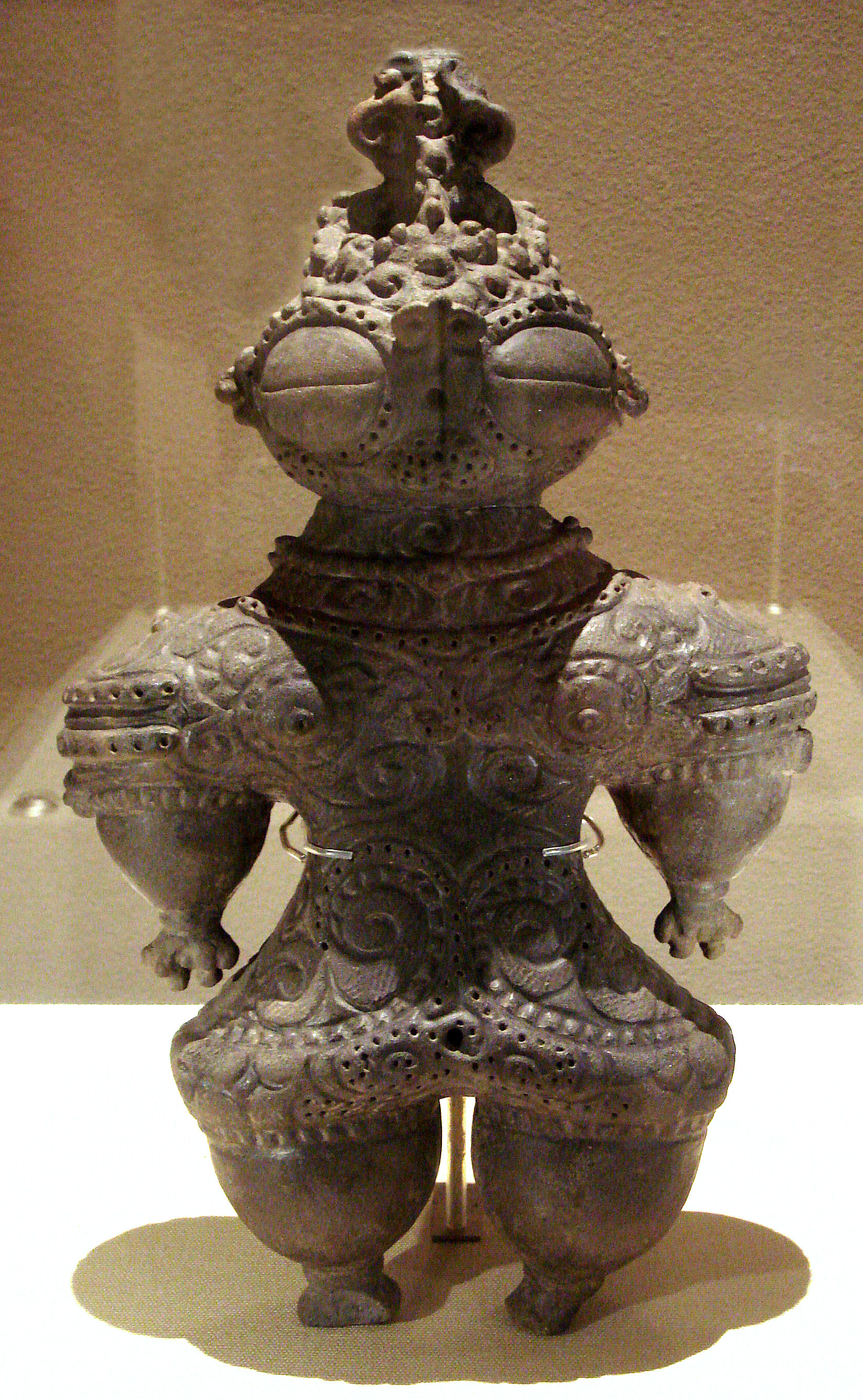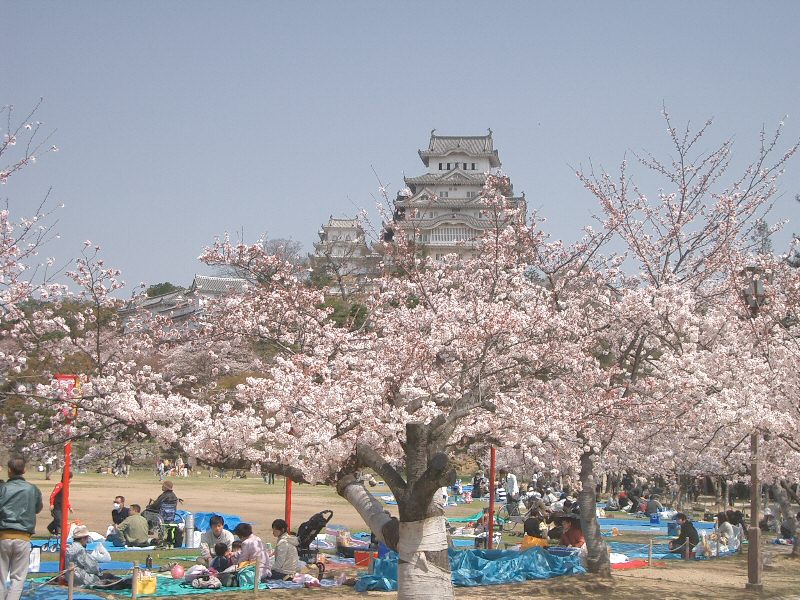|
Rokkakudō (Kitaibaraki)
, was a hexagonal wooden retreat overlooking the sea along the Izura coast in Kitaibaraki, Ibaraki, Kitaibaraki, Ibaraki Prefecture, Japan. Dating to 1905, it was part of the Izura Institute of Arts & Culture, Ibaraki University. Constructed in the sukiya-zukuri style, single-storey, with a tiled roof, an area of nine square metres, and painted red, it was designed by scholar and critic Okakura Tenshin who spent time there with painter Yokoyama Taikan. In 2003 it was added to the Cultural Properties of Japan#Categories of registered Cultural Properties, Tangible Cultural Properties Register. On 11 March 2011 it was swept off to sea in 2011 Tōhoku earthquake and tsunami, the tsunami. It was rebuilt and opened to the public in April 2012. See also * Tenshin Memorial Museum of Art, Ibaraki * Nihon Bijutsuin * Cultural Properties of Japan#Categories of registered Cultural Properties, Registered Cultural Properties * Kanrantei * Japanese aesthetics References Further reading ... [...More Info...] [...Related Items...] OR: [Wikipedia] [Google] [Baidu] |
Flickr - IbaGeo - 五浦海岸 六角堂
Flickr ( ) is an image hosting service, image and Online video platform, video hosting service, as well as an online community, founded in Canada and headquartered in the United States. It was created by Ludicorp in 2004 and was previously a common way for amateur and professional photographers to host high-resolution photos. It has changed ownership several times and has been owned by SmugMug since April 20, 2018. Flickr had a total of 112 million registered members and more than 3.5 million new images uploaded daily. On August 5, 2011, the site reported that it was hosting more than 6 billion images. In 2024, it was reported as having shared 10 billion photos and accepting 25 million per day. Photos and videos can be accessed from Flickr without the need to register an account, but an account must be made to upload content to the site. Registering an account also allows users to create a profile page containing photos and videos that the user has uploaded and also grants the ... [...More Info...] [...Related Items...] OR: [Wikipedia] [Google] [Baidu] |
Japan Times
''The Japan Times'' is Japan's largest and oldest English-language daily newspaper. It is published by , a subsidiary of News2u Holdings, Inc. It is headquartered in the in Kioicho, Chiyoda, Tokyo. History ''The Japan Times'' was launched by on 22 March 1897, with the goal of giving Japanese people an opportunity to read and discuss news and current events in English language, English to help Japan participate in the international community. In 1906, Zumoto was asked by Japanese Resident-General of Korea Itō Hirobumi to lead the English-language newspaper ''The Seoul Press''. Zumoto closely tied the operations of the two newspapers, with subscriptions of ''The Seoul Press'' being sold in Japan by ''The Japan Times'', and vice versa for Korea. Both papers wrote critically of Korean culture and civilization, and advocated for Korea under Japanese rule, Japan's colonial control over the peninsula in order to civilize the Koreans. The newspaper was independent of government ... [...More Info...] [...Related Items...] OR: [Wikipedia] [Google] [Baidu] |
Registered Tangible Cultural Properties , a type of computer memory
{{disambiguation ...
Registered may refer to: * Registered mail, letters, packets or other postal documents considered valuable and in need of a chain of custody * Registered trademark symbol, symbol ® that provides notice that the preceding is a trademark or service mark. See also * *Register (other) *Registered memory Registered memory (also called buffered memory) is computer memory that has a register between the DRAM modules and the system's memory controller. A registered memory module places less electrical load on a memory controller than an unregist ... [...More Info...] [...Related Items...] OR: [Wikipedia] [Google] [Baidu] |
History Of Art In Japan
Japanese art consists of a wide range of art styles and media that includes ancient pottery, sculpture, ink painting and calligraphy on silk and paper, paintings and woodblock prints, ceramics, origami, bonsai, and more recently manga and anime. It has a long history, ranging from the beginnings of human habitation in Japan, sometime in the 10th millennium BCE, to the present day. Japan has alternated between periods of exposure to new ideas, and long periods of minimal contact with the outside world. Over time the country absorbed, imitated, and finally assimilated elements of foreign culture that complemented already-existing aesthetic preferences. The earliest complex art in Japan was produced in the 7th and 8th centuries in connection with Buddhism. In the 9th century, as the Japanese began to turn away from China and develop indigenous forms of expression, the secular arts became increasingly important; until the late 15th century, both religious and secular arts ... [...More Info...] [...Related Items...] OR: [Wikipedia] [Google] [Baidu] |
Buildings Of The Meiji Era
A building or edifice is an enclosed structure with a roof, walls and windows, usually standing permanently in one place, such as a house or factory. Buildings come in a variety of sizes, shapes, and functions, and have been adapted throughout history for numerous factors, from building materials available, to weather conditions, land prices, ground conditions, specific uses, prestige, and aesthetic reasons. To better understand the concept, see ''Nonbuilding structure'' for contrast. Buildings serve several societal needs – occupancy, primarily as shelter from weather, security, living space, privacy, to store belongings, and to comfortably live and work. A building as a shelter represents a physical separation of the human habitat (a place of comfort and safety) from the ''outside'' (a place that may be harsh and harmful at times). buildings have been objects or canvasses of much artistic expression. In recent years, interest in sustainable planning and building pract ... [...More Info...] [...Related Items...] OR: [Wikipedia] [Google] [Baidu] |
Japanese Aesthetics
Japanese aesthetics comprise a set of ancient ideals that include '' wabi'' (transient and stark beauty), '' sabi'' (the beauty of natural patina and aging), and '' yūgen'' (profound grace and subtlety). These ideals, and others, underpin much of Japanese cultural and aesthetic norms on what is considered tasteful or beautiful. Thus, while seen as a philosophy in Western societies, the concept of aesthetics in Japan is seen as an integral part of daily life. Japanese aesthetics now encompass a variety of ideals; some of these are traditional while others are modern and sometimes influenced by other cultures. Shinto and Buddhism Shinto is considered to be at the fountain-head of Japanese culture. With its emphasis on the wholeness of nature and character in ethics, and its celebration of the landscape, it sets the tone for Japanese aesthetics. Until the thirteenth century, Shinto remained the main influence on Japanese aesthetics. In the Buddhist tradition, all things are cons ... [...More Info...] [...Related Items...] OR: [Wikipedia] [Google] [Baidu] |
Kanrantei
is the only building to survive from a mansion complex of the Date clan in Matsushima, Miyagi Prefecture, Japan. It is said to have originated as a teahouse in Toyotomi Hideyoshi's Fushimi Castle, to have been moved to Edo by Date Masamune, and finally to have been brought to Matsushima by his son Date Tadamune. It has been designated a Prefectural Cultural Property. Inside, 21 painted fusuma panels of the Edo period have been designated an Important Cultural Property. See also *Fushimi Castle *Japanese painting is one of the oldest and most highly refined of the Japanese visual arts, encompassing a wide variety of genres and styles. As with the history of Japanese arts in general, the long history of Japanese painting exhibits synthesis and competiti ... References Buildings and structures in Miyagi Prefecture Museums in Miyagi Prefecture Historic house museums in Japan {{Japan-struct-stub ... [...More Info...] [...Related Items...] OR: [Wikipedia] [Google] [Baidu] |
Nihon Bijutsuin
is a non-governmental artistic organization in Tokyo, Japan dedicated to ''Nihonga'' (Japanese style painting). The academy promotes the art of Nihonga through a biennial exhibition, the ''Inten'' Exhibition. History The Nihon Bijutsuin was founded by Okakura Tenshin in 1898, together with a group of artists, including Hashimoto Gahō, Yokoyama Taikan, Shimomura Kanzan, Hishida Shunsō and several others, in response to Okakura being ousted from the Tokyo School of Fine Arts. Nihon Bijutsuin moved with Okakura to Izura, Ibaraki (now the city of Ibaraki) in 1906. However, Okakura was soon recruited by Ernest Fenollosa to assist in his efforts to introduce Chinese and Japanese arts to the western world via the Museum of Fine Arts, Boston, and soon lost interest in guiding the new organization. When Okakura died in 1913, the group dissolved. Nihon Bijutsuin was resurrected a year later in 1914 under Yokoyama Taikan, who relocated it back to Yanaka, Tokyo. In 1920, separate ... [...More Info...] [...Related Items...] OR: [Wikipedia] [Google] [Baidu] |
Tenshin Memorial Museum Of Art, Ibaraki
The opened in Kitaibaraki, Ibaraki Prefecture, Japan in 1997. It has a memorial room dedicated to Okakura Tenshin and his works and displays other items of Japanese art, especially by the artists of the Izura coast. See also * Rokkakudō * Nihon Bijutsuin is a non-governmental artistic organization in Tokyo, Japan dedicated to ''Nihonga'' (Japanese style painting). The academy promotes the art of Nihonga through a biennial exhibition, the ''Inten'' Exhibition. History The Nihon Bijutsuin was fou ... References External linksTenshin Memorial Museum of Art * Art museums and galleries in Ibaraki Prefecture Art museums and galleries established in 1997 1997 establishments in Japan Kitaibaraki, Ibaraki {{Japan-museum-stub ... [...More Info...] [...Related Items...] OR: [Wikipedia] [Google] [Baidu] |
Ibaraki Shimbun
Ibaraki may refer to any of the following places in Japan: * Ibaraki Prefecture, one of the 47 prefectures of Japan **Ibaraki, Ibaraki, a town in Ibaraki Prefecture **Ibaraki Airport, an airport in Omitama, Ibaraki **Ibaraki dialect, the dialect spoken in Ibaraki Prefecture * Ibaraki, Osaka, a city in Osaka Prefecture It can also refer to: * Ibaraki-dōji, an oni (demon or ogre) from Japanese legend * ''Ibaraki'', a kabuki play by Kawatake Mokuami * Miss Ibaraki (Tsukuba Kasumi); Japanese friendship dolls * Ibaraki, a side project of Trivium vocalist Matt Heafy Matthew Kiichi Heafy ( ; born January 26, 1986) is a Japanese-American musician, best known as the guitarist and lead vocalist for heavy metal band Trivium. He was also the lead vocalist for the band Capharnaum, along with Trivium's former pro ... * Ibaraki (surname) {{disambiguation ... [...More Info...] [...Related Items...] OR: [Wikipedia] [Google] [Baidu] |
Daily Yomiuri
The is a Japanese newspaper published in Tokyo, Osaka, Fukuoka, and other major Japanese cities. It is one of the five major newspapers in Japan; the other four are ''The Asahi Shimbun'', the ''Chunichi Shimbun'', the ''Mainichi Shimbun'', and the ''Nihon Keizai Shimbun''. It is headquartered in Otemachi, Chiyoda, Tokyo.'' It is a newspaper that represents Tokyo and generally has a conservative orientation. It is one of Japan's leading newspapers, along with the Osaka-based liberal (Third Way) ''Asahi Shimbun'' and the Nagoya-based social democratic ''Chunichi Shimbun''. This newspaper is well known for its pro-American stance among major Japanese media. It is published by regional bureaus, all of them subsidiaries of The Yomiuri Shimbun Holdings, Japan's largest media conglomerate by revenue and the second largest media conglomerate by size behind Sony,The Yomiuri Shimbun Holdings is the largest media conglomerate by revenue in Japan, while Sony is Japan's largest medi ... [...More Info...] [...Related Items...] OR: [Wikipedia] [Google] [Baidu] |




